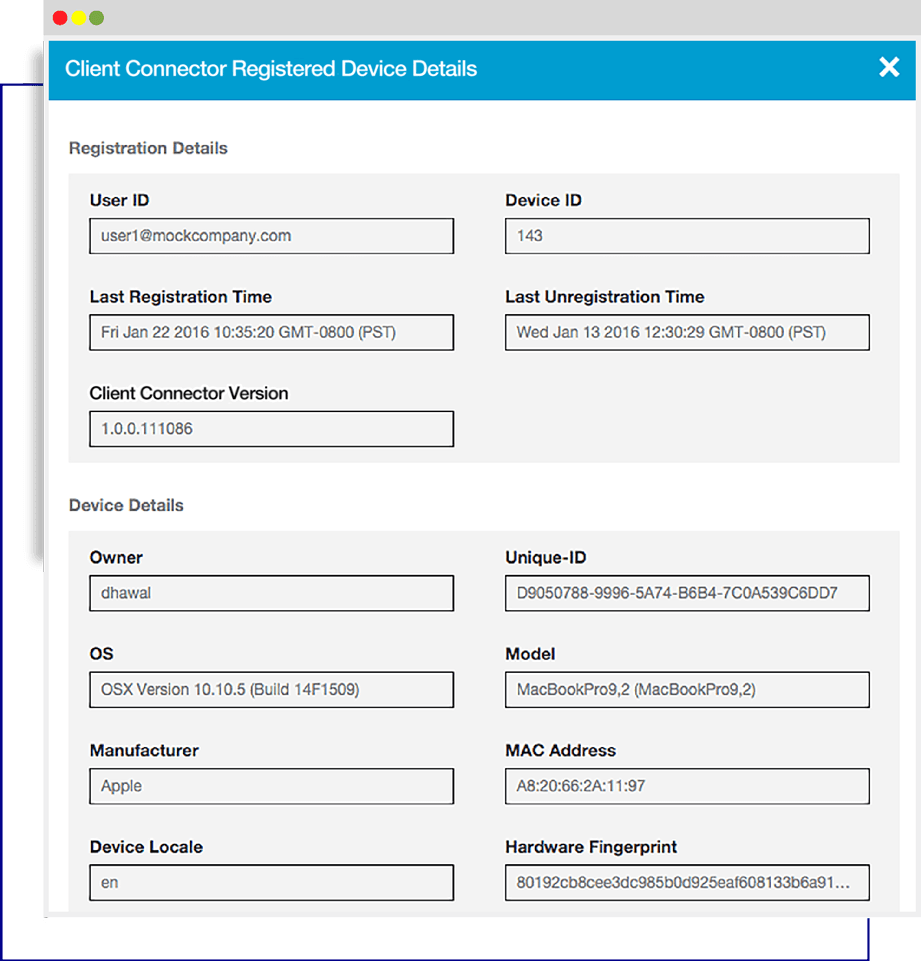This section provides the whitelisting rules for Zscaler Client Connector: If your organization uses GPO to push policies to both Windows 64-bit and Windows 32-bit systems, then add the Whitelisting instructions for both the versions in your GPO policy. Zscaler Client Connector 1.5 (or later) doesn’t support the fciv.exe file. Zscaler Download For Mac; Use the Zscaler Analyzer app to analyze the path between your location and the Zscaler Enforcement Node (ZEN), or to analyze the time it takes for your browser to load a web page, so the Zscaler Support team can detect potential issues. The app performs an MTR (Z-Traceroute) and a full web page load test (Z-WebLoad).
ZScaler is the Internet content filtering solution used in the Stokes County School District for all users accessing the Internet inside our District or from District owned devices, used off-site. All users are required to authenticate to the content filter system to gain access to the Internet. Guest Presenters to the Stokes County School District may obtain a day-use username and password from the Technology Department, upon request. Please see your site Media Coordinator or Principal to submit guest access request.

Domain Joined Devices (Windows Desktop & Laptop computers) owned by Stokes County School District
NO USER ACTION NEEDED FOR DOMAIN JOINED DEVICES. Your ZScaler certificate and authentication cookie will automatically push down to your workstation, when you log into the CO domain. This is an automated process that occur's at login. You will NOT need to manually install the certificate to any District owned, domain joined computer. You will be prompted to login to the ZScaler login screen the first time you access the Internet, only once, from each new computer that you login to.
You will login to ZScaler using your Stokes County Domain user credentials as follows: firstname.lastname@stokes.k12.nc.us
When prompted for your password, you will enter the domain password (password that you use to login to the network at your school).
Personally Owned Devices
Personally owned devices are also required to authenticate to the ZScaler Content Filter, to gain access to the Internet. Users will be required to download and install the ZScaler root security certificate. This certificate is installed so that your Internet traffic can be securely transmitted. No data is collected from your computer, and no software or off-site monitoring capabilities are ever installed on personally-owned devices.
Before you install the certificate, you will need to download it to your computer. If you are using a Windows or Mac computer, save the file to your Desktop so that you'll be able to locate it later. Please refer to the installation instructions below, depending on your OS platform.
Download ZScaler Certificate (click here)
Below are the Instructions for manually installing the ZScaler Certificates to various Operating System platforms and Web Browsers for personally owned devices brought into our network.
Windows OS, using Internet Explorer web browser
Download all the ZScaler Certificate and save to your location choice (desktop, flash drive, etc).
Open Internet Explorer.
From Internet Explorer, go to the Toolsmenu, select Internet Options, and then in the window that appears switch to the Content tab and click the 'Certificates' button.
To install the certificate go to the Trusted Root Certification Authorities tab and click the 'Import..' button.
In the Certificate Import Wizard window that appears click the 'Next button.
To select the file, press the 'Browse..' button.
Find the saved certificate file (desktop, flash drive, etc.) and click the 'Open' button..'Next','Finish'. Victoria 2 westernize cheat.
The first time you open an Internet Page, you will receive a prompt from the Z-Scaler Web filter requesting that you authenticate. You will enter your Stokes Domain Username: firstname.lastname@stokes.k12.nc.us (This will be the same 'format syntax' as your email address.)
Creating a Zscaler Package Fac simile disdetta contratto software.

I normally use the Packages software to create a PKG file. The PKG can be used with the CMAppUtil tool to create a CMMAC file---then I import the CMMAC into SCCM. This gives me the ability to automate the installation of Zscaler using a specific policy configuration.
Step 1
In Packages, copy the Zscaler-installer.app into Payload > /Users/Shared/zscaler
Step 2
Create a simple script (save as script.sh):
sudo sh '/Users/Shared/zscaler/Zscaler-osx-2.2.4.0-installer/Contents/MacOS/installbuilder.sh --cloudName YourCloudName --policyToken YourCustomToken2B12343631234465612D234264322B343733372E393166322E636164323564643838411234
--strictEnforcement 1 --useDomain YourDomain.com' -target CurrentUserHomeDirectory -verbose > /Users/Shared/zscaler/log.txt
Step 3
In Packages, copy the script.sh to Scripts > Post-installation option.
Step 4
Build package.
Packages creates your-package.PKG file.
Zscaler Mac Install
Step 5
Zscaler Mac Processes
With the PKG, you can now use the Microsoft CMAppUtil tool to generate the CMMAC file.
* Be careful with the CMMAC creation process. Sometimes other PKGs end up in the package file; remove those before adding to SCCM.